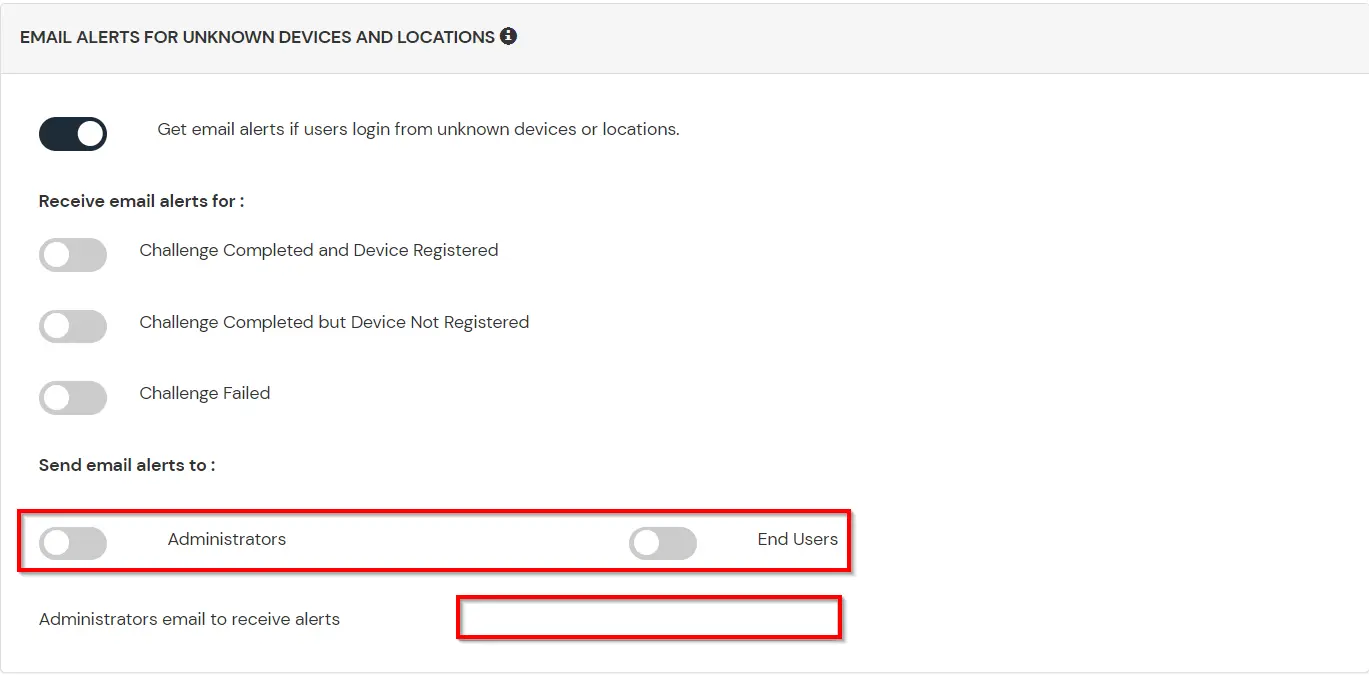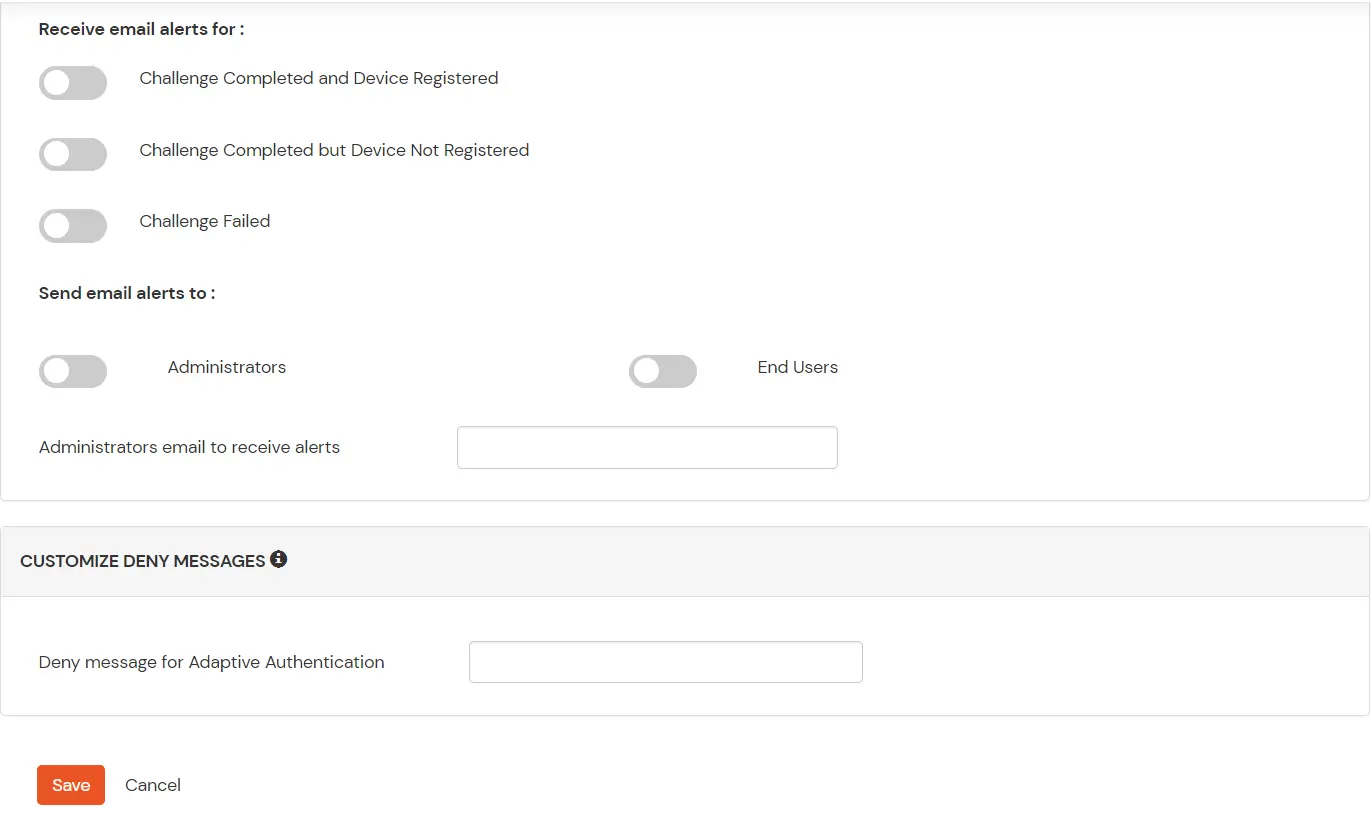Need Help? We are right here!
Need Help? We are right here!
Thanks for your Enquiry.
If you don't hear from us within 24 hours, please feel free to send a follow-up email to info@xecurify.com
Search Results:
×Salesforce 2FA solution by miniOrange adds an additional layer of security to your Salesforce Login. With Salesforce 2FA being enabled, anyone trying to log in to your Salesforce account needs to pass two authentication factors to get access. Salesforce 2FA authentication starts with a user submitting his traditional username and password. Once the user successfully gets authenticated with the 1st step verification, configured 2FA (OTP over SMS, Push Notifications, YubiKey, TOTP, Google Authenticator, etc) method prompts for 2nd-step verification. A user who successfully completes both steps of authentication is given access to the Salesforce account. Enabling 2FA will stop someone from using the Salesforce account even if cyber attackers get your login information.
miniorange provides 15+ 2FA methods and solutions for various use cases. Organizations can set up specific authentication and configuration options in addition to security, including
miniOrange offers free help through a consultation call with our System Engineers to Install or Setup Salesforce SSO & MFA solution in your environment with 30-day free trial.
For this, you need to just send us an email at idpsupport@xecurify.com to book a slot and we'll help you in no time.
miniOrange provides user authentication from various external sources, which can be Directories (like ADFS, Microsoft Active Directory, OpenLDAP, AWS etc), Identity Providers (like Microsoft Entra ID, Okta, AWS), and many more. You can configure your existing directory/user store or add users in miniOrange.

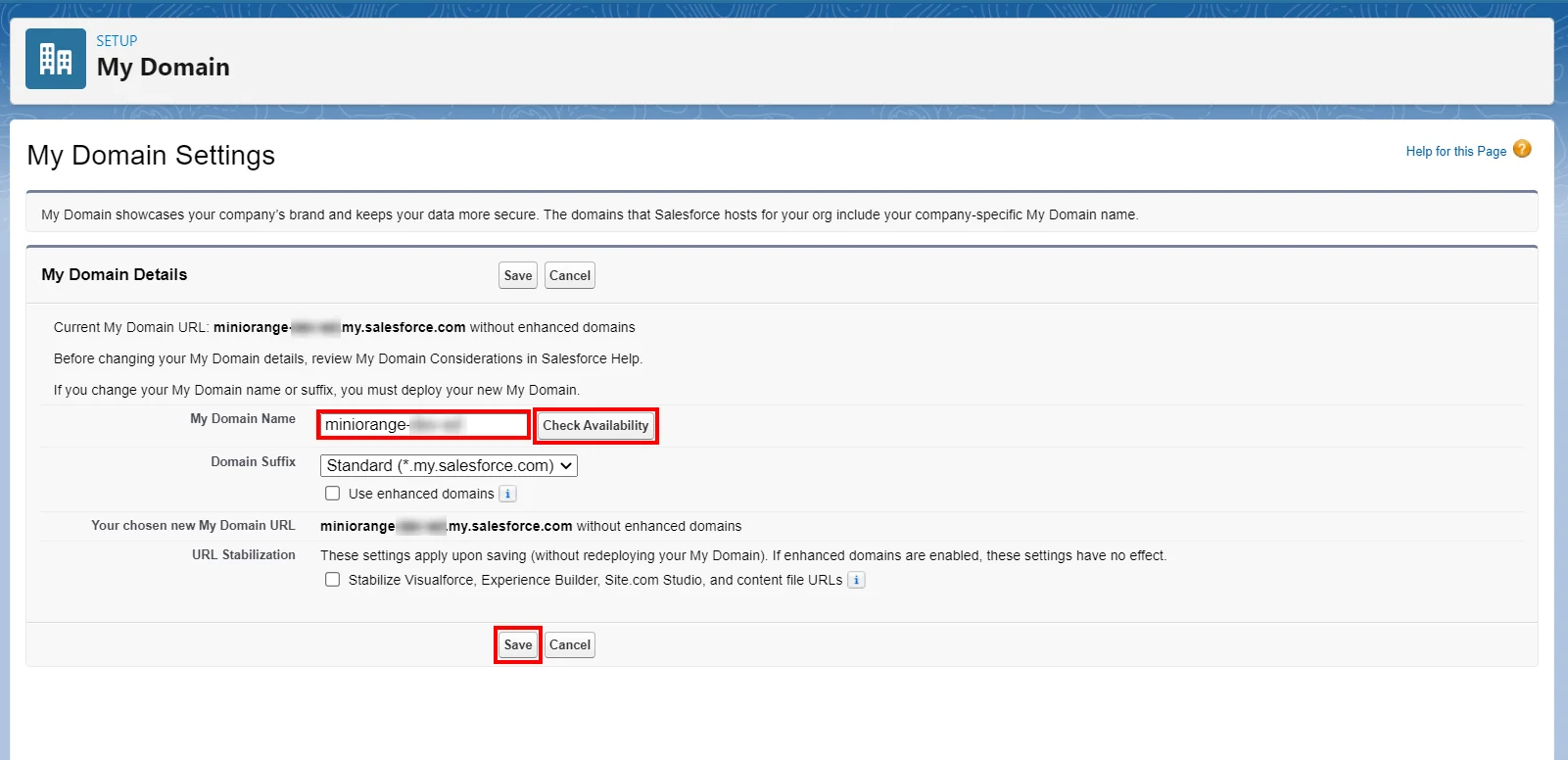
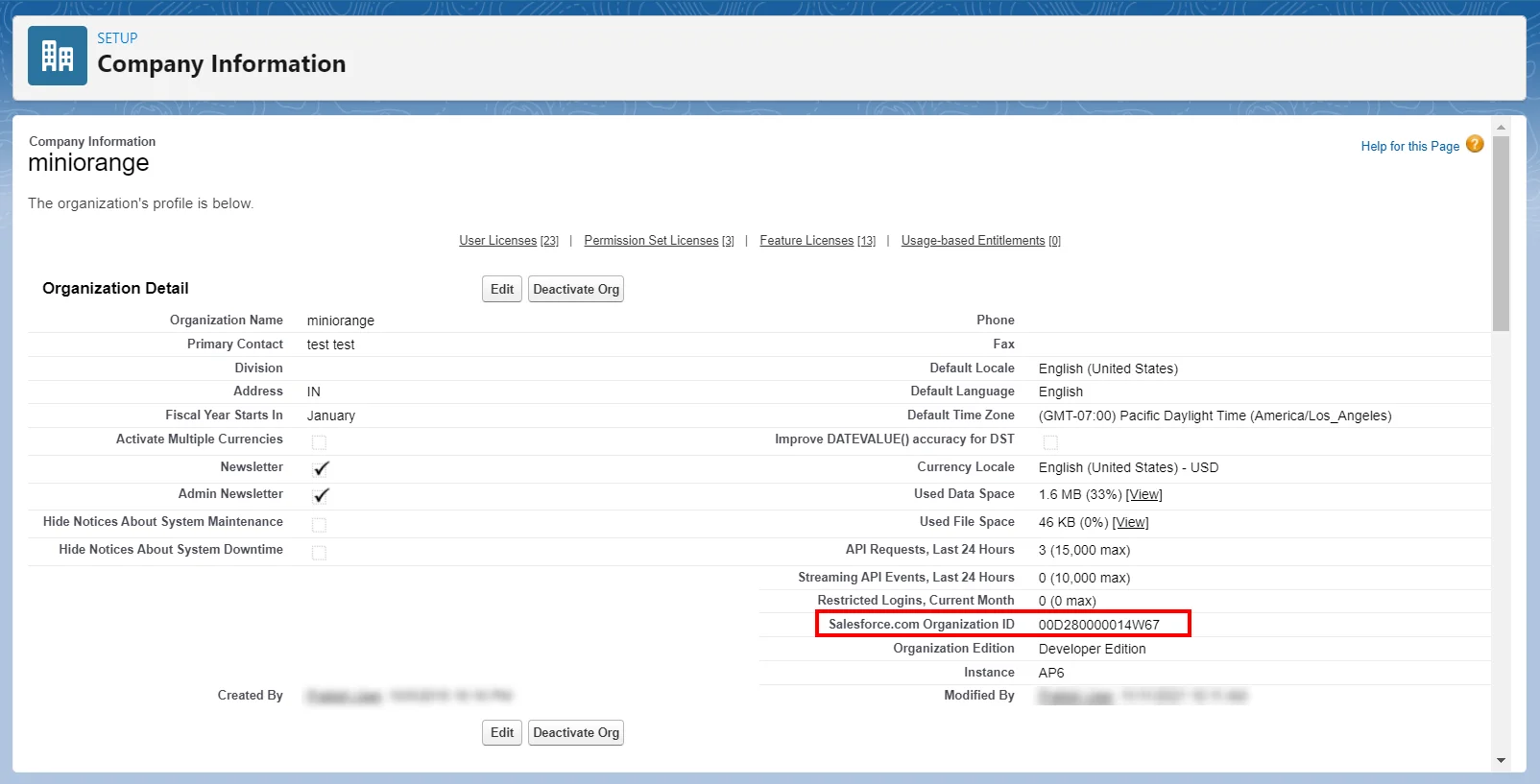
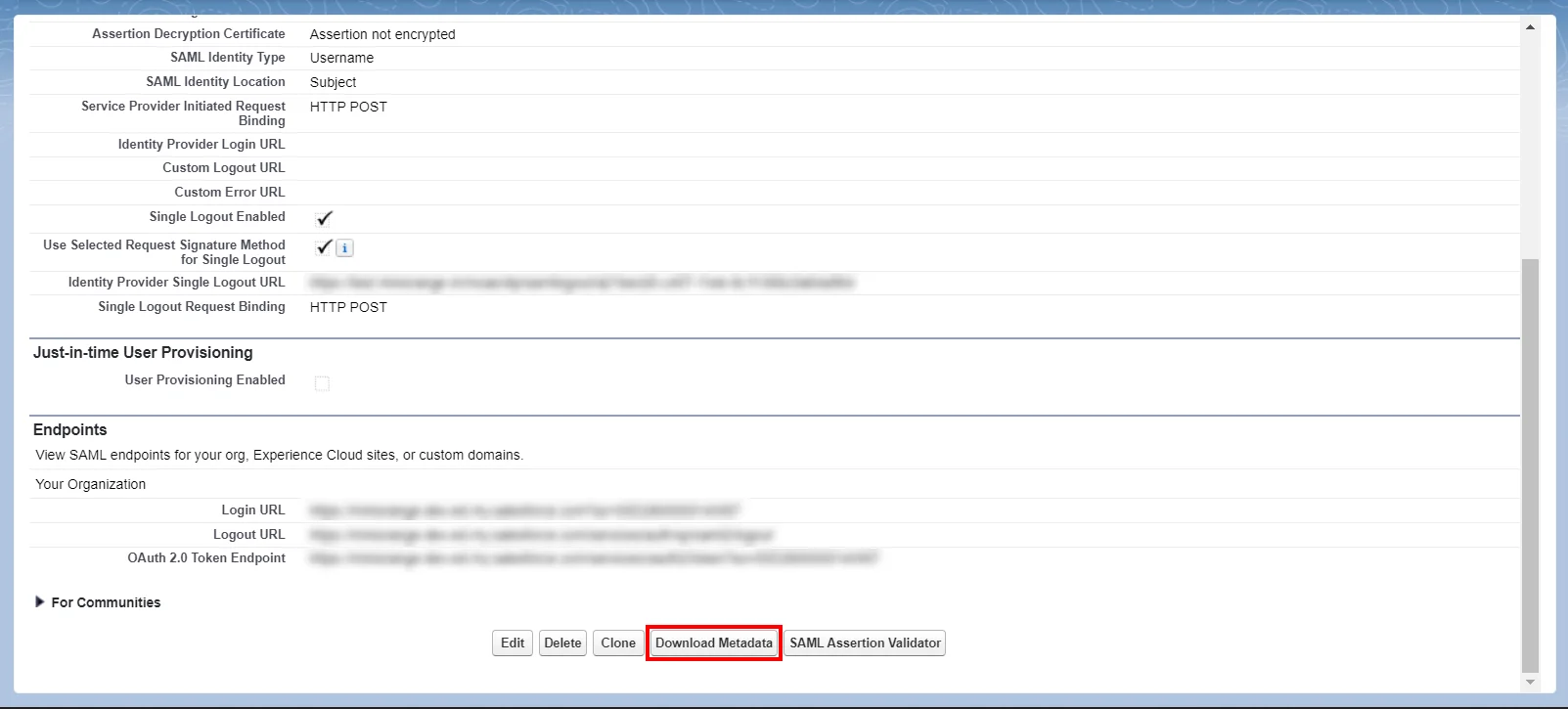

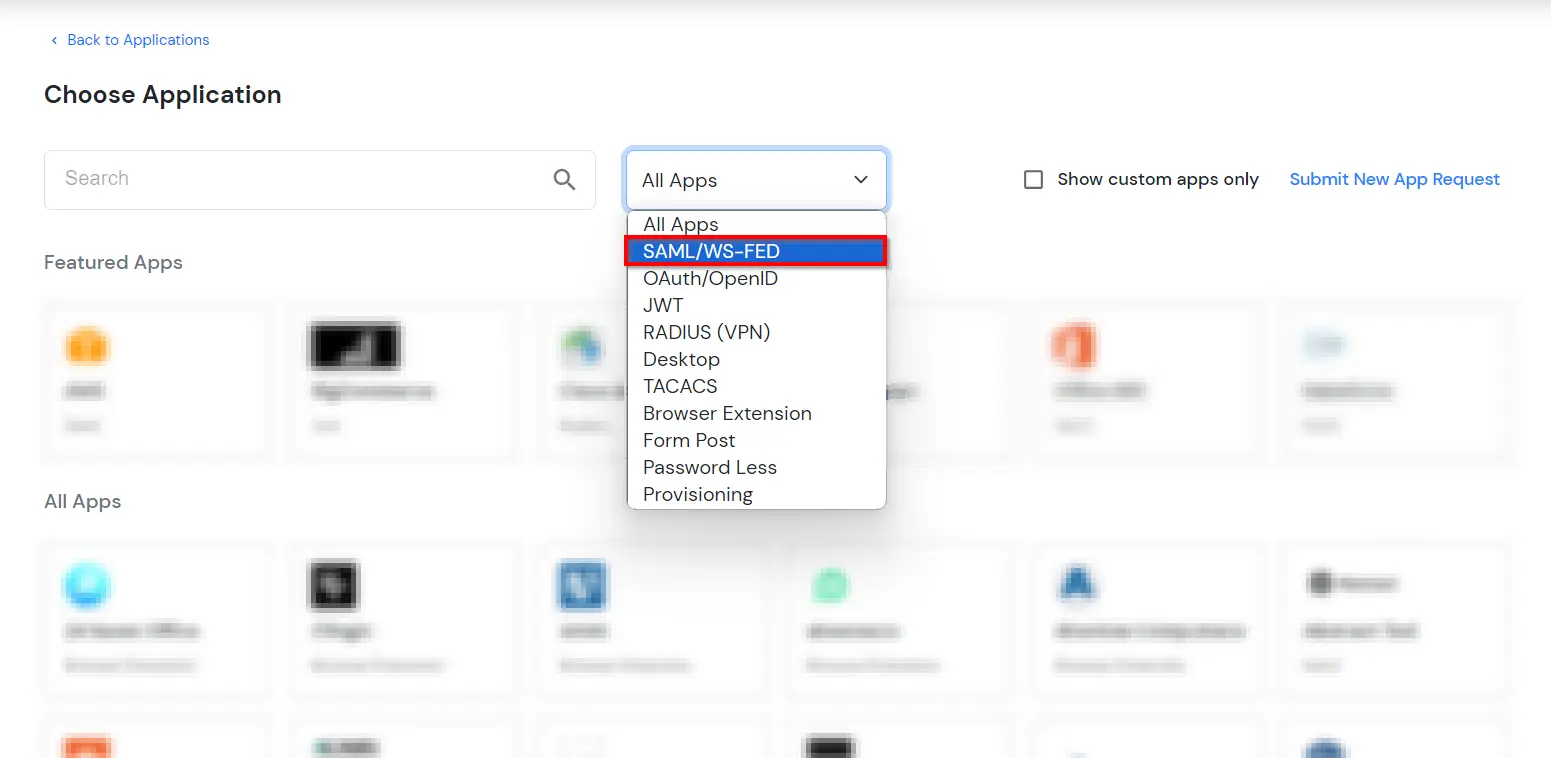

| Application Name | Salesforce |
| SP Entity ID or Issuer | https://[yourdomain].my.salesforce.com/ |
| ACS URL | https://[yourdomain].my.salesforce.com/?so=[organization_id] |
| Single Logout URL | https://customdomain.my.salesforce.com |
| Sign Response | ON |

(Follow the steps given here to find out Salesforce profileId.)
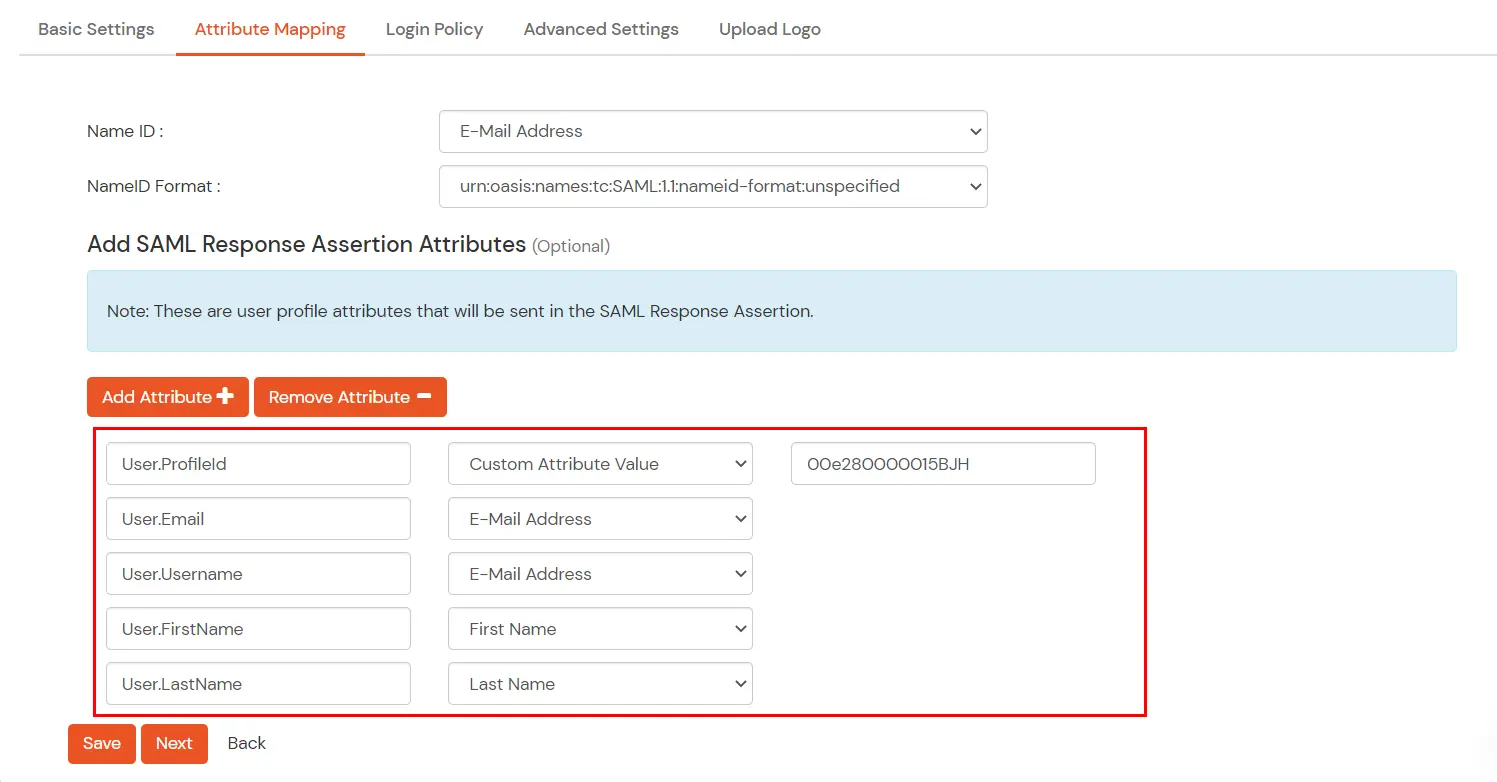

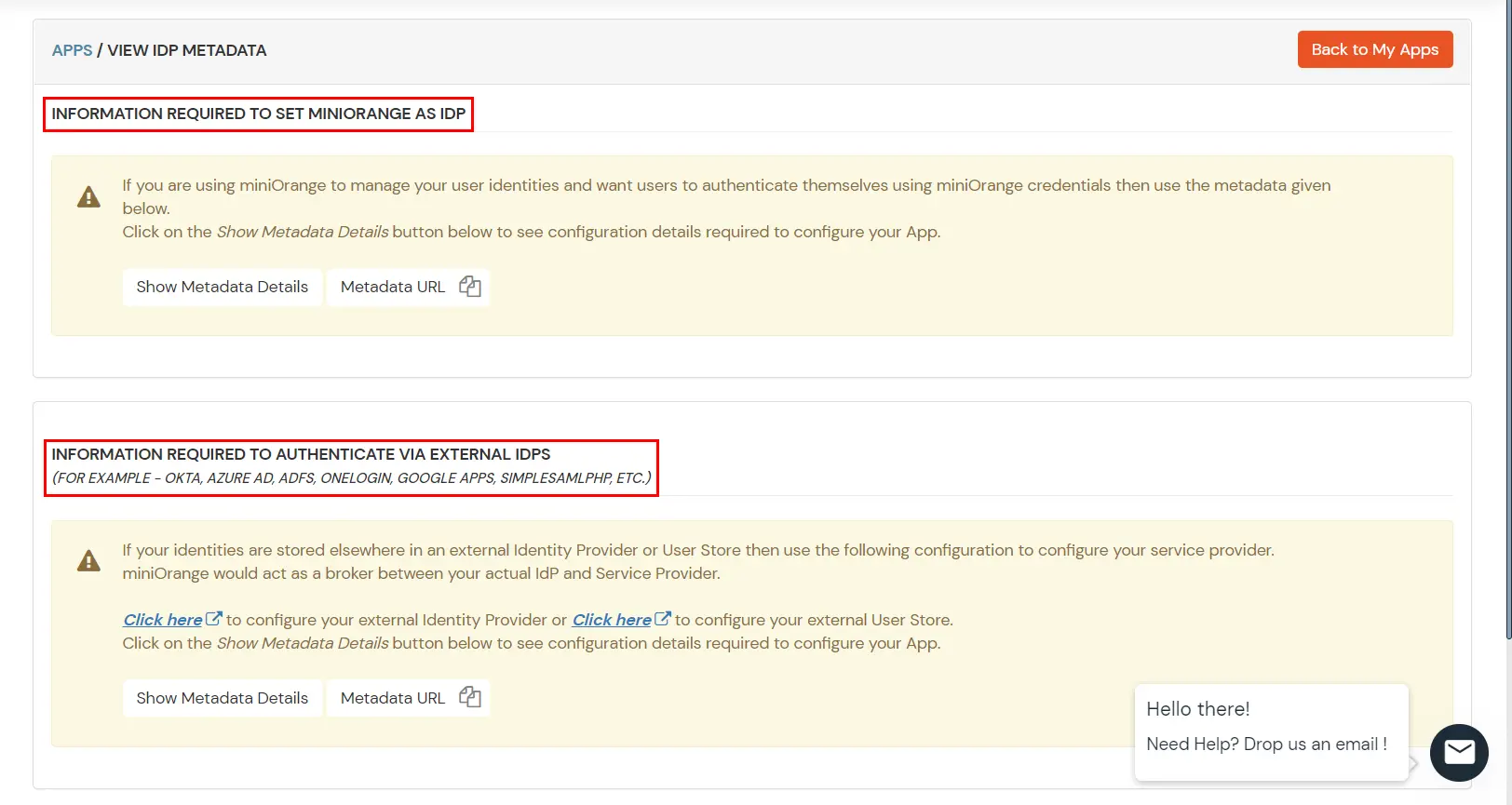
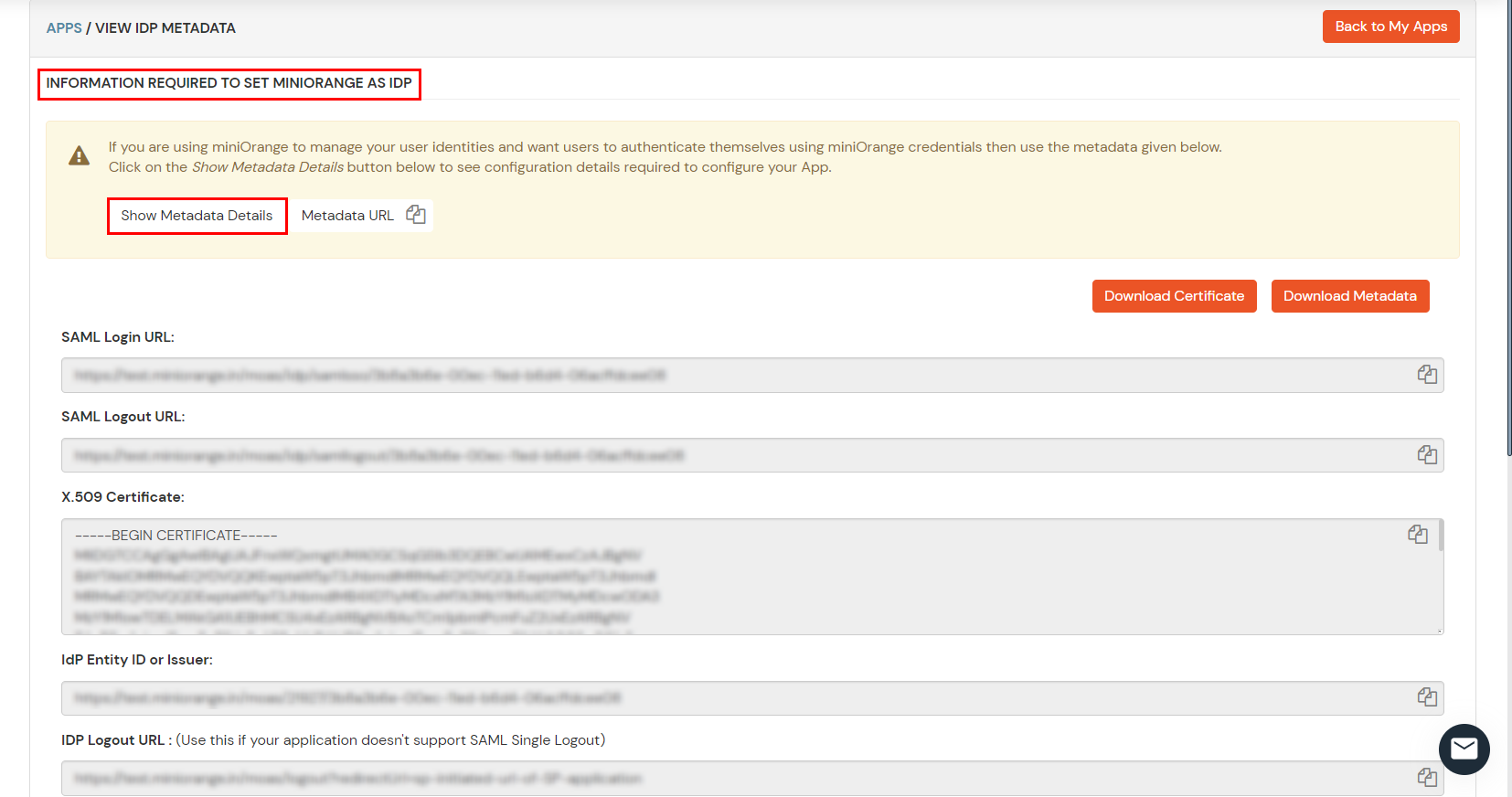
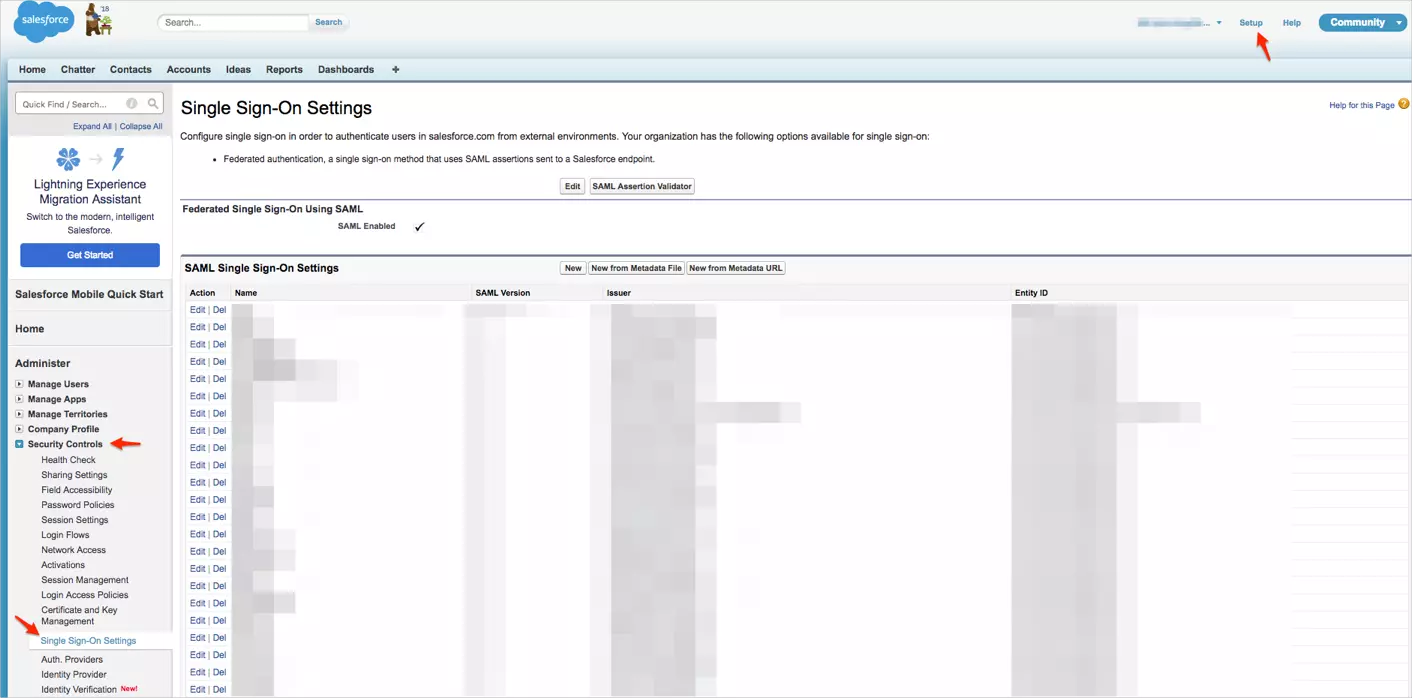
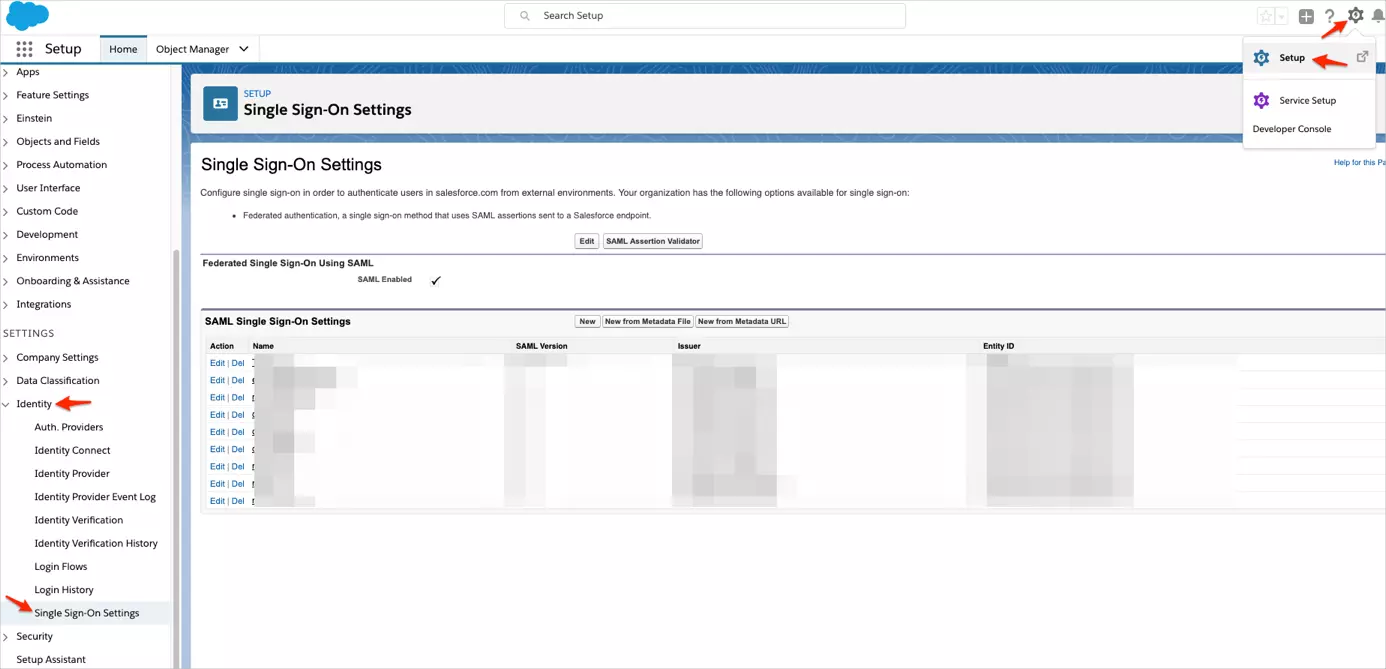



| Issuer | IDP Entity ID/Issuer in miniorange metadata |
| Entity ID | https://[yourdomain].my.salesforce.com |
| Identity Provider Certificate | Upload Certificate from miniOrange metadata |
| Request Signature method | RSA-SHA256 |
| Assertion Decryption Certificate | Not encrypted |
| *SAML Identity Type | Assertion contains the User's Salesforce username |
| *SAML Identity Location | Identity is in the NameIdentifier element of the Subject statement |
| *Service Provider Initiated Request Binding | HTTP Redirect |
| Identity Provider Login URL | SAML Login URL in miniOrange metadata |
| Custom Logout URL | https://[yourdomain].my.salesforce.com |
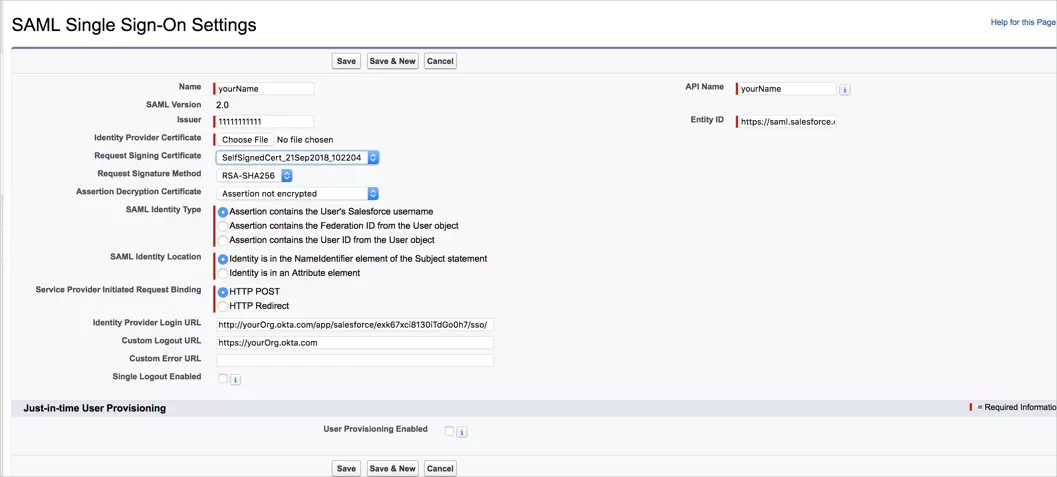
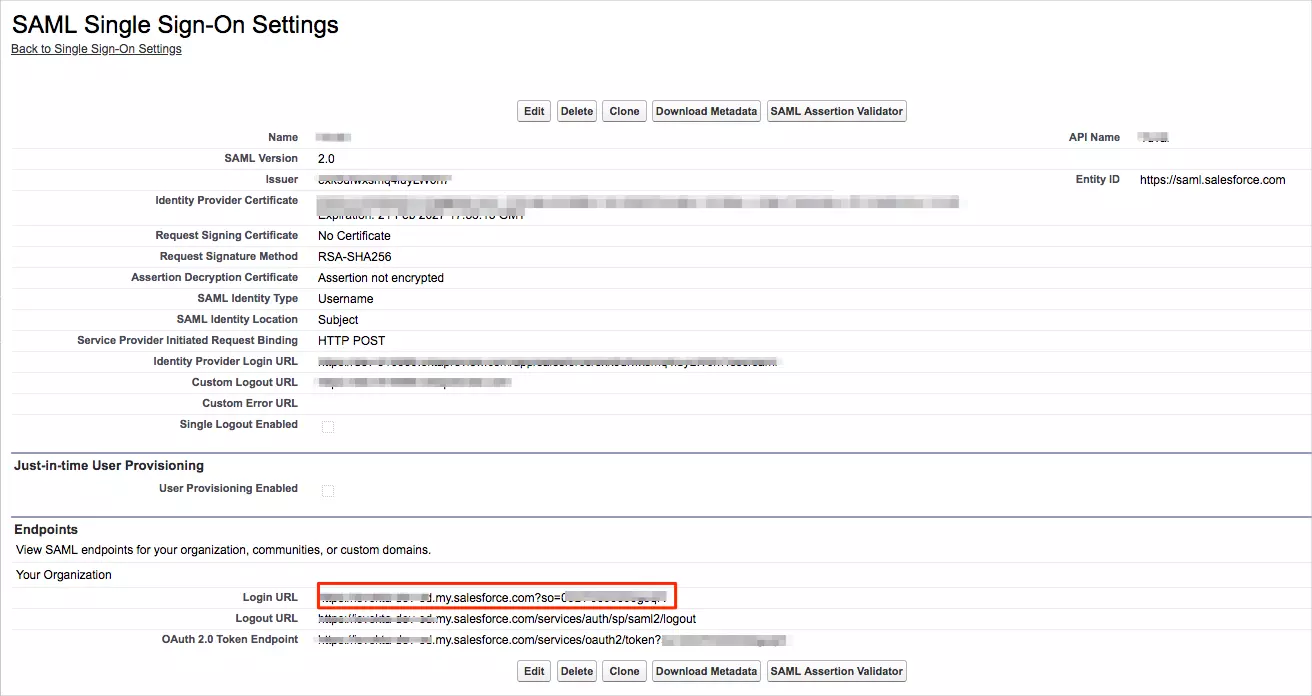
3.1: Enable 2FA for Users of Salesforce app
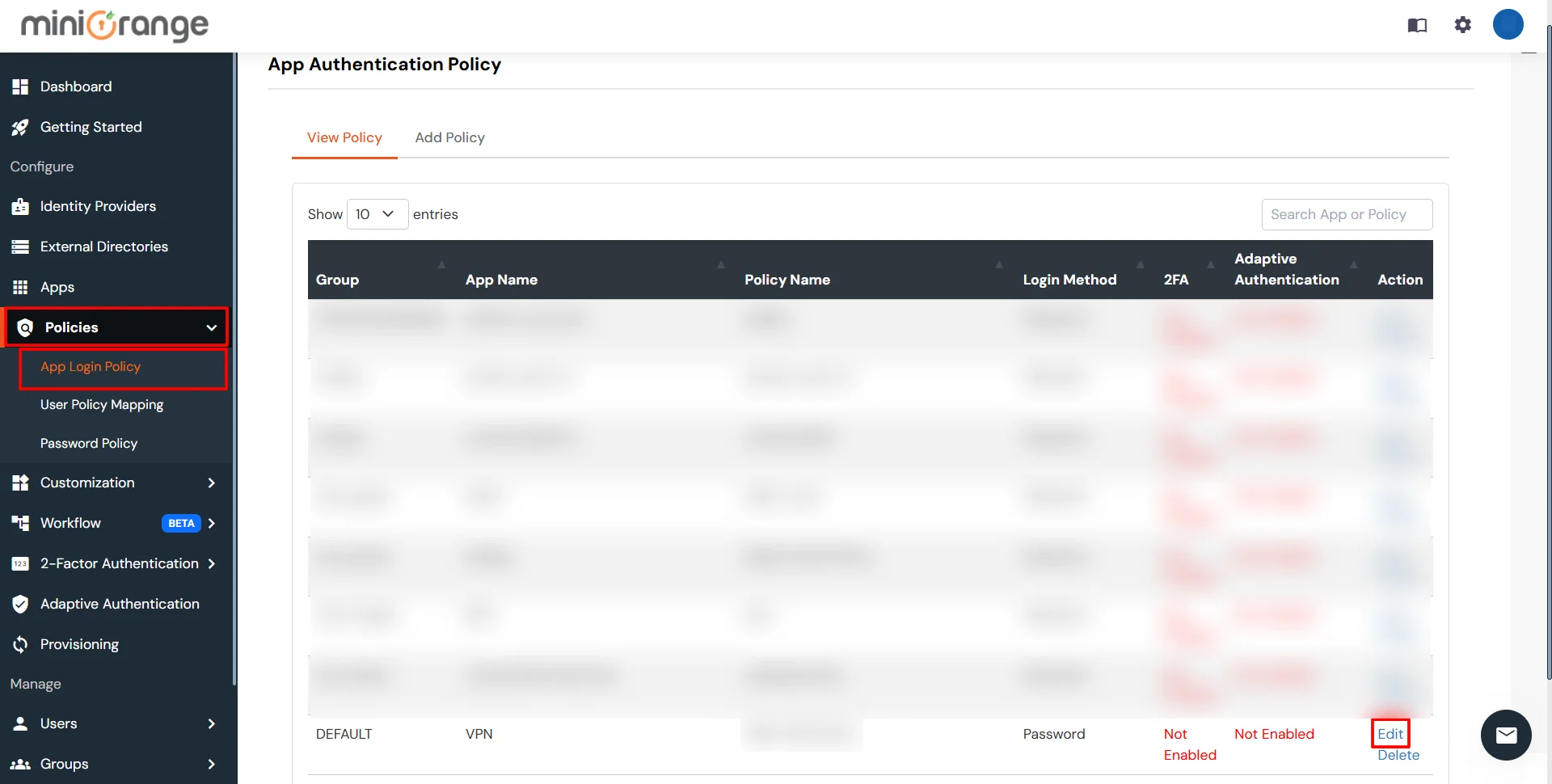

3.2: Configure 2FA for your Endusers
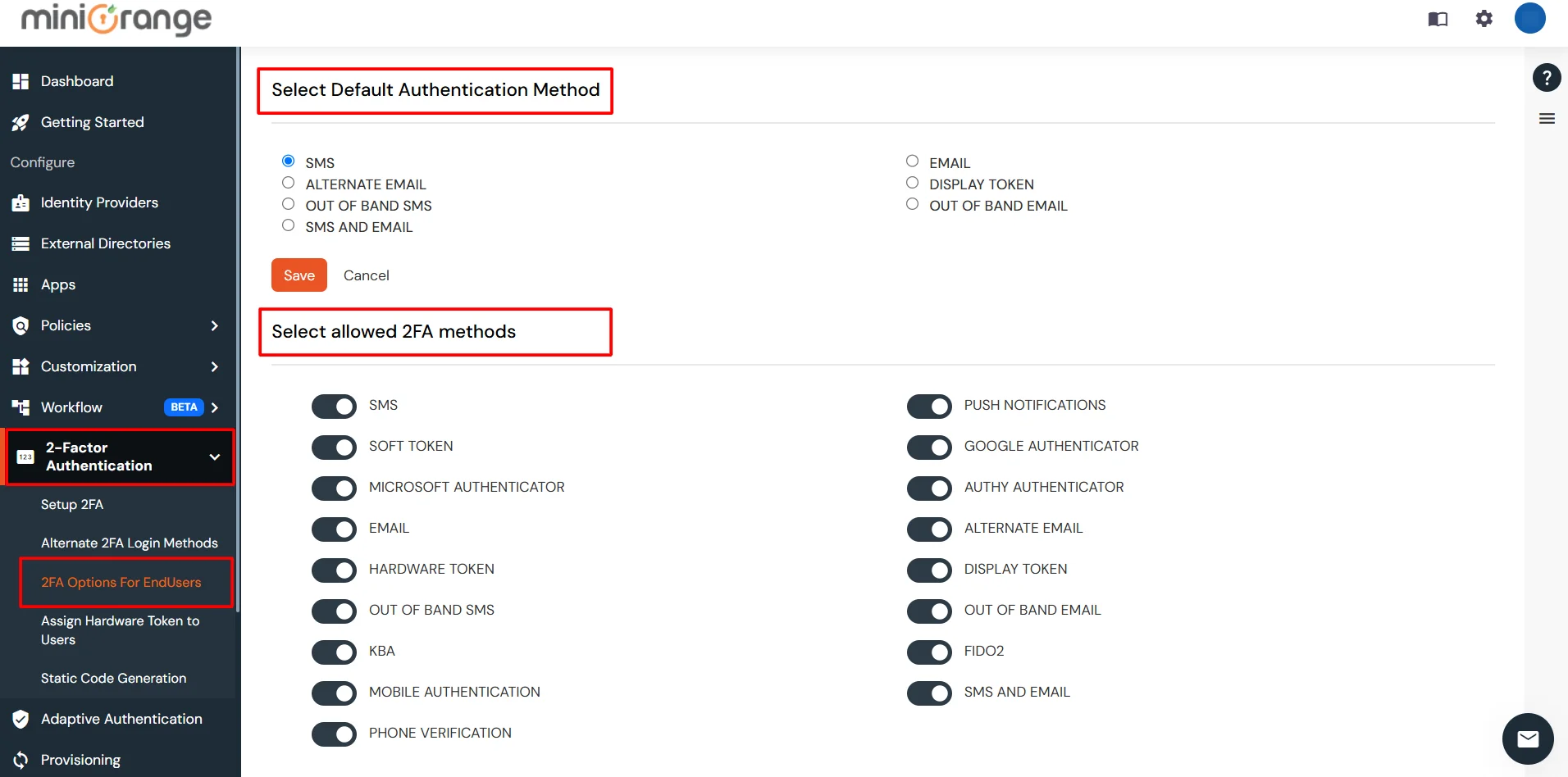
3.3: Enduser 2FA Setup
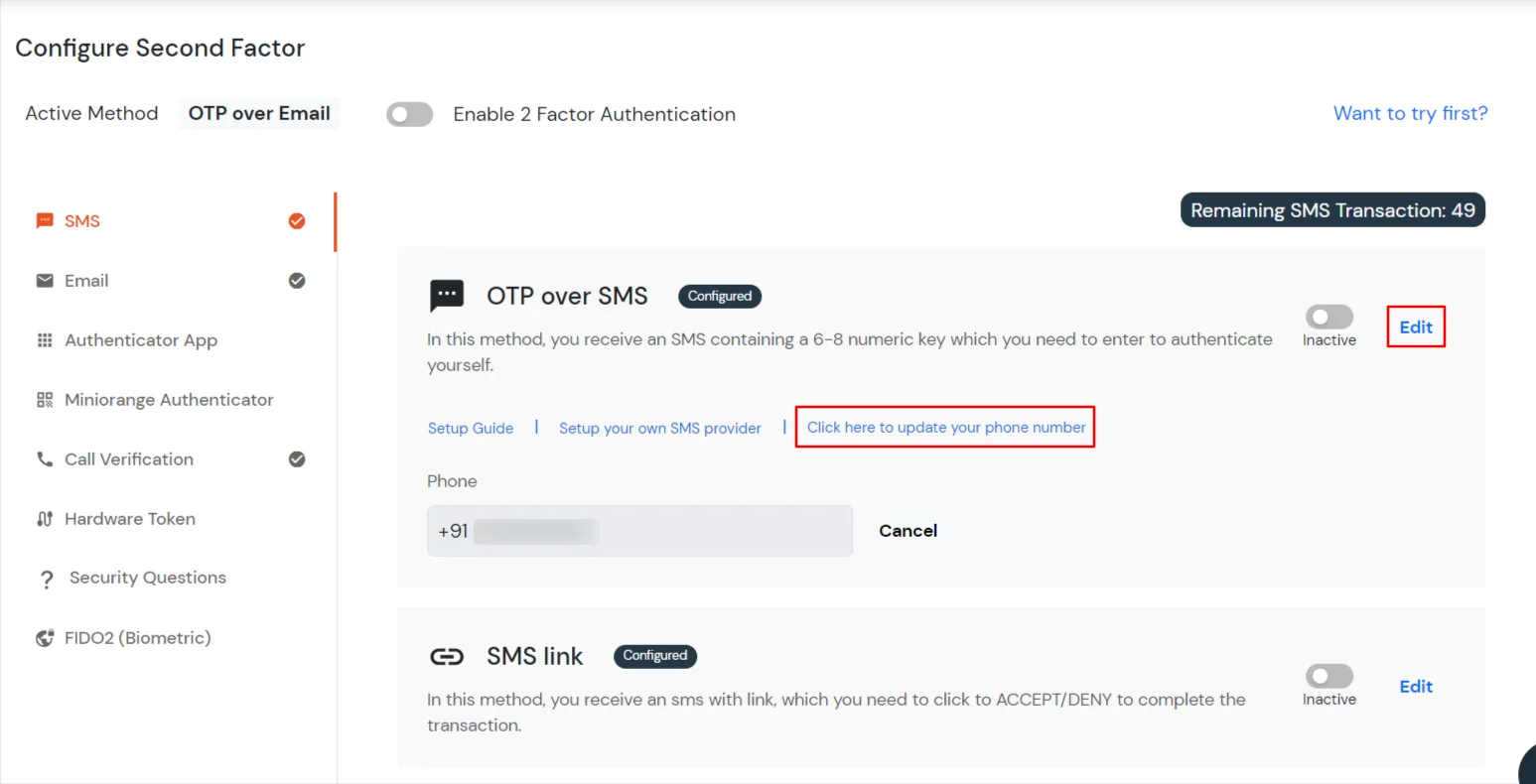

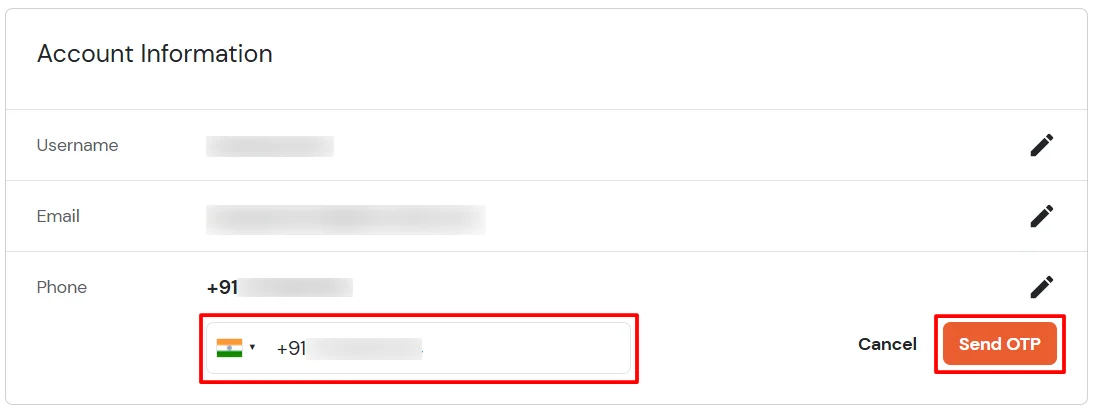
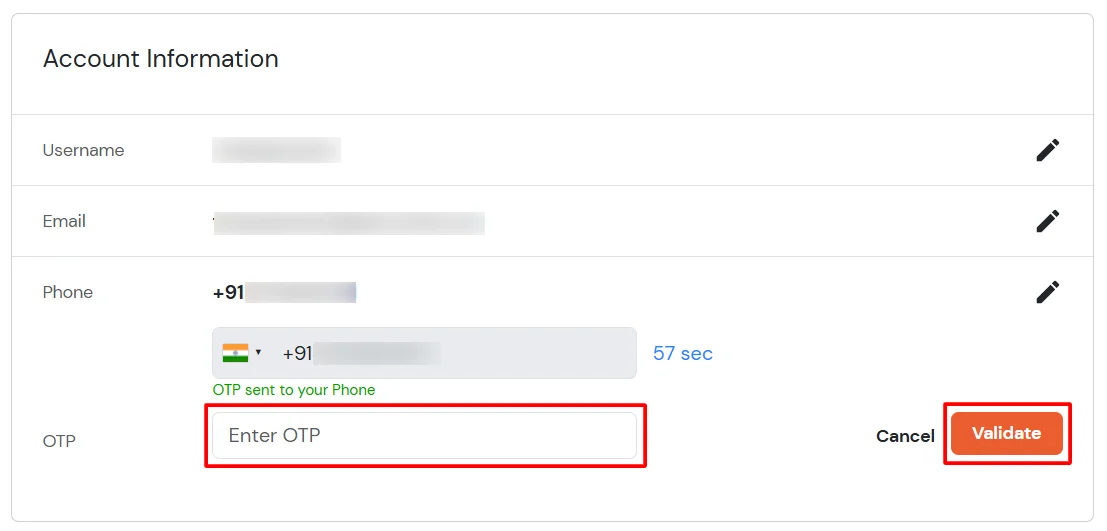
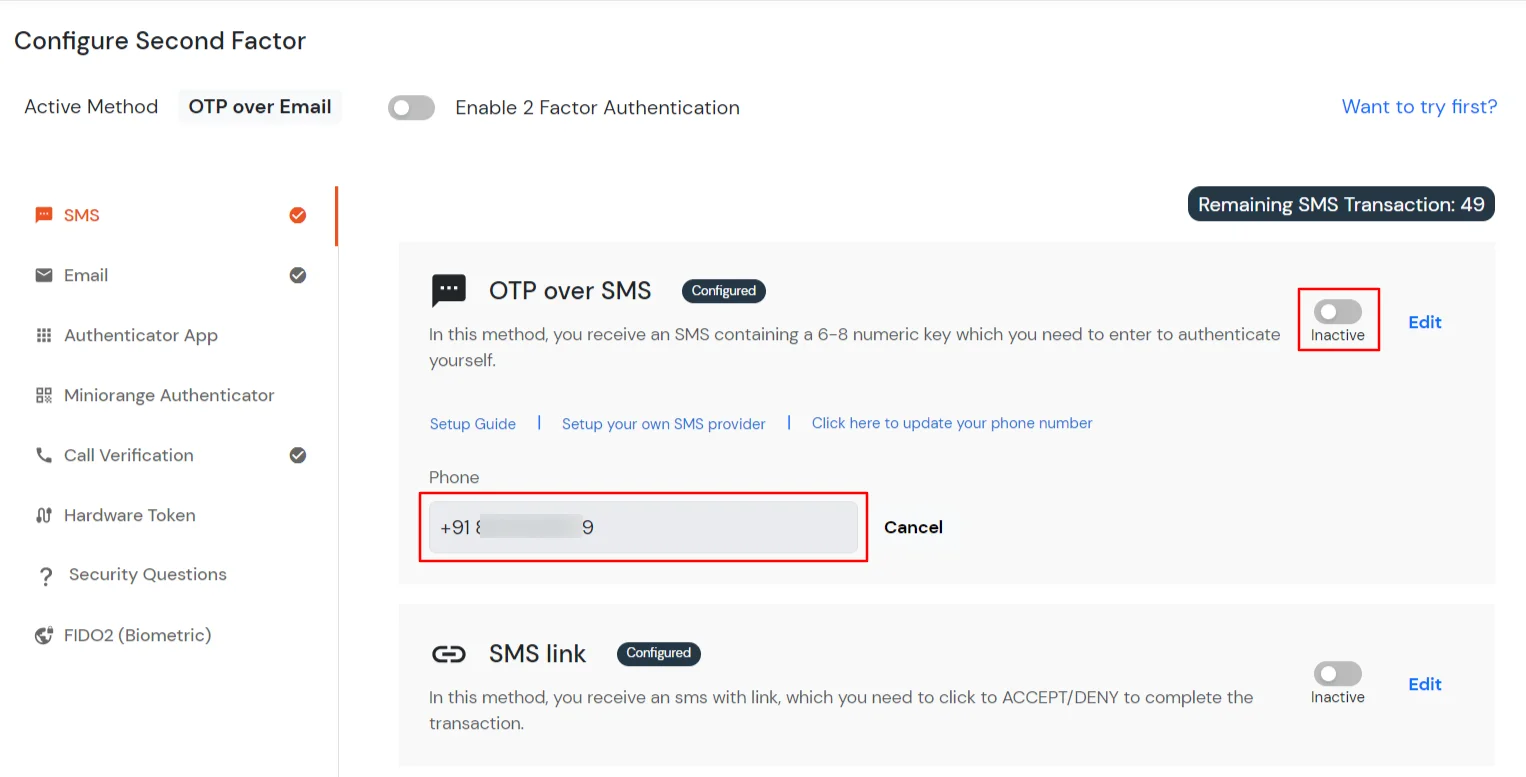
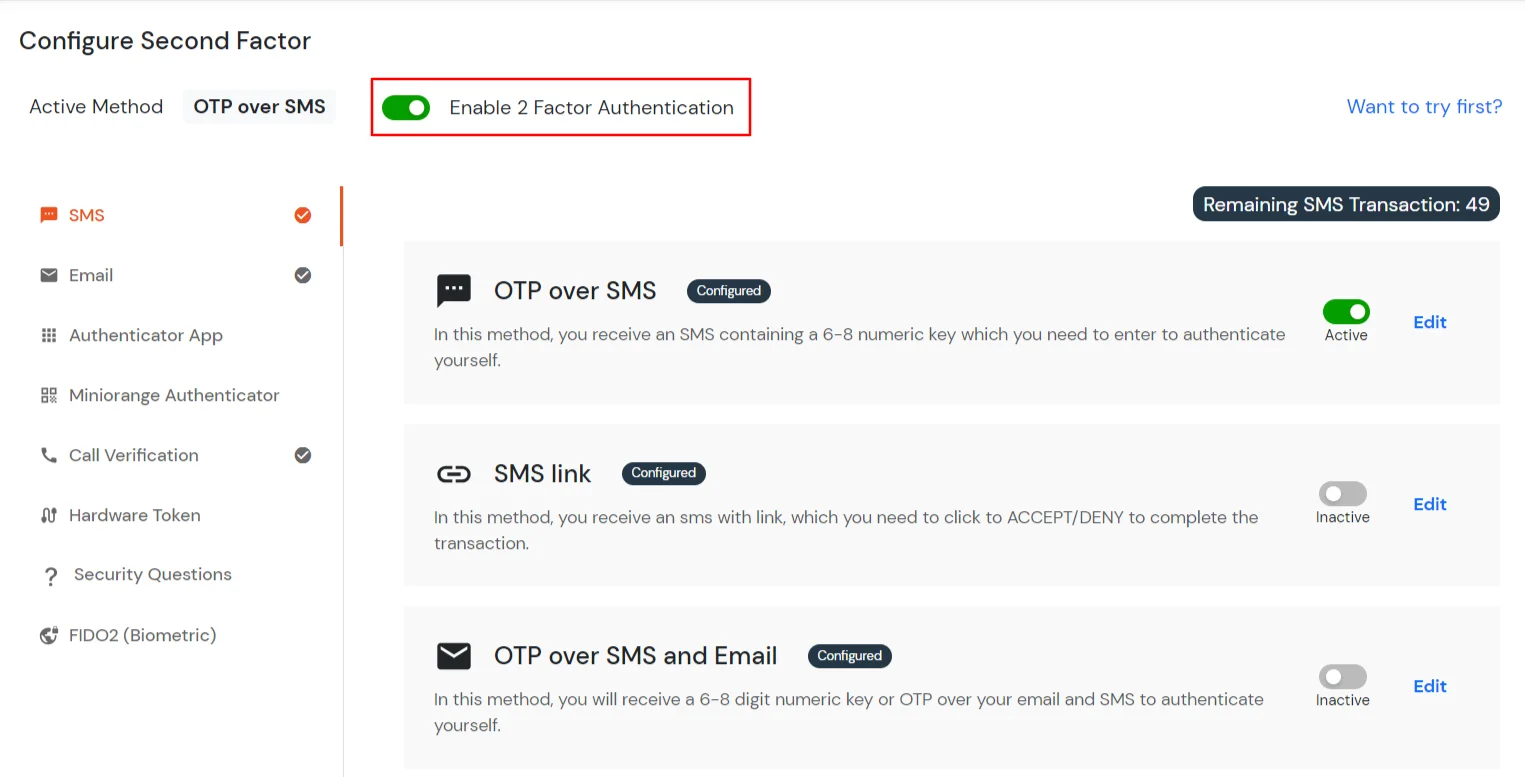
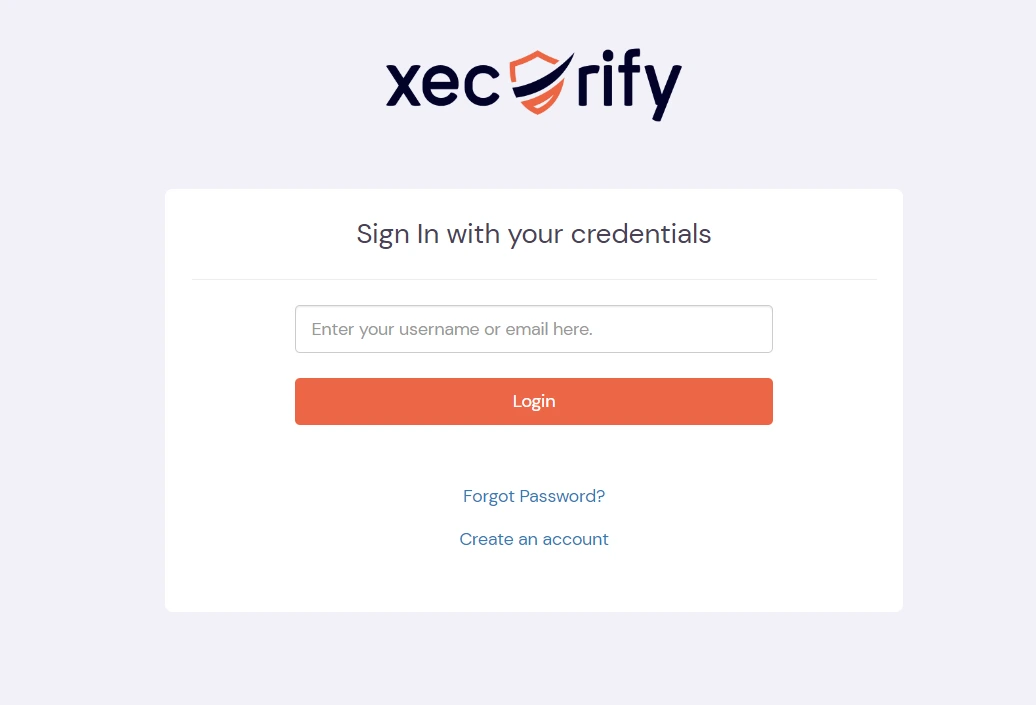
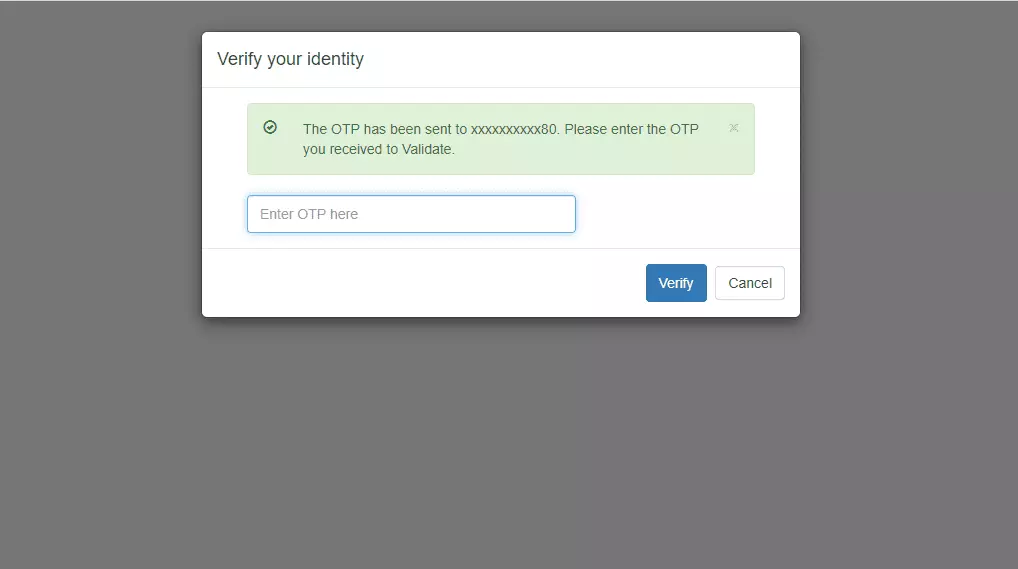
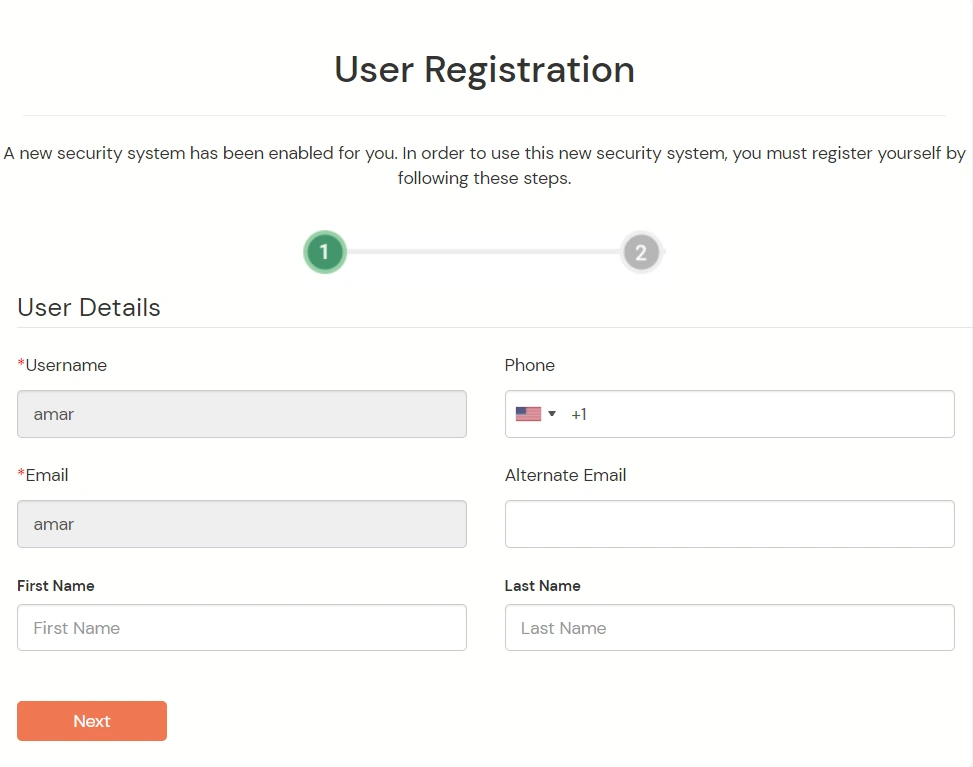
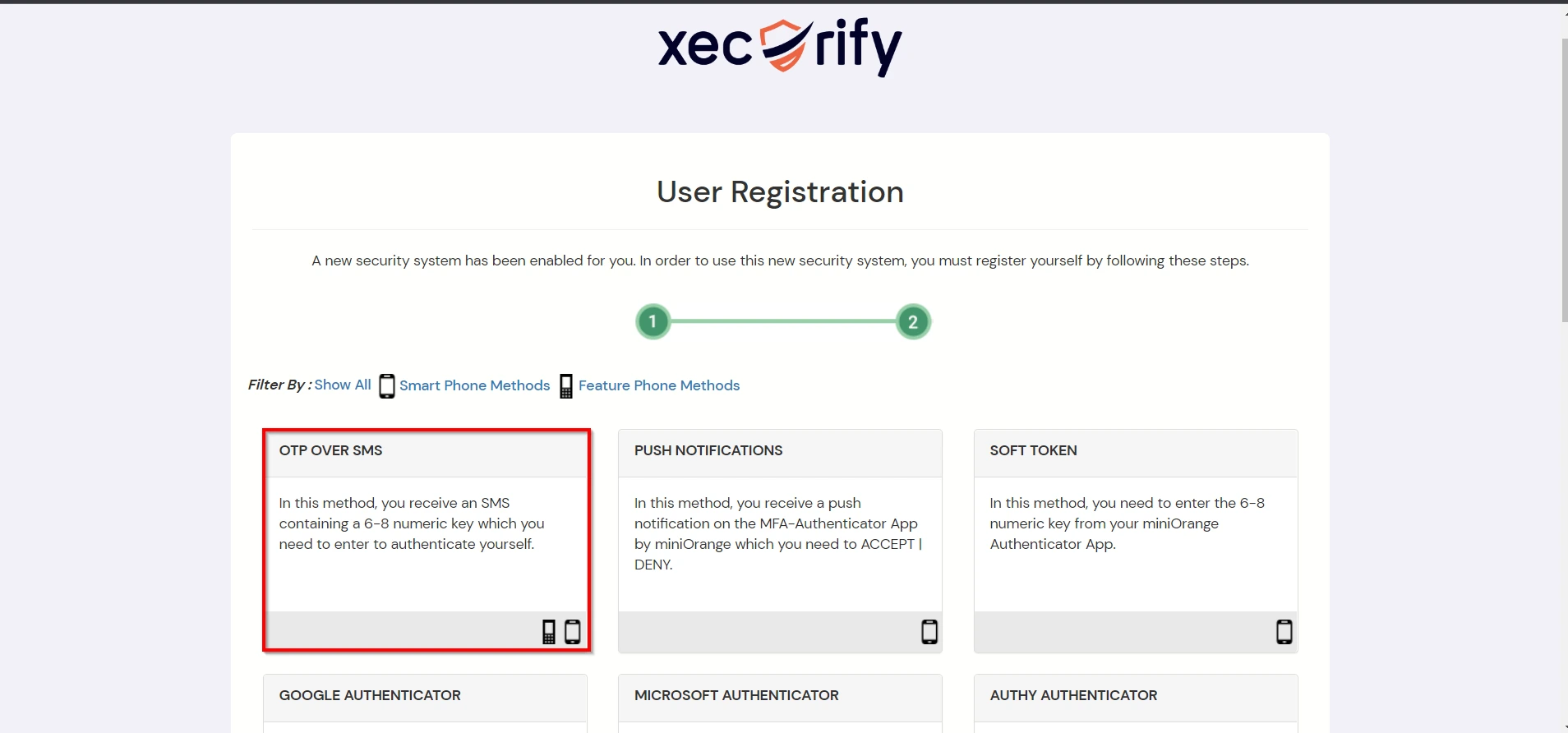
Contact us or email us at idpsupport@xecurify.com and we'll help you setting it up in no time.
A. Restricting access to Salesforce with IP Configuration
You can use adaptive authentication with Salesforce Single Sign-On (SSO) to improve the security and functionality of Single Sign-On. You can allow a IP Address in certain range for SSO or you can deny it based your requirements and you can also challenge the user to verify his authenticity. Adaptive authentication manages the user authentication bases on different factors such as Device ID, Location, Time of Access, IP Address and many more.
You can configure Adaptive Authentication with IP Blocking in following way :
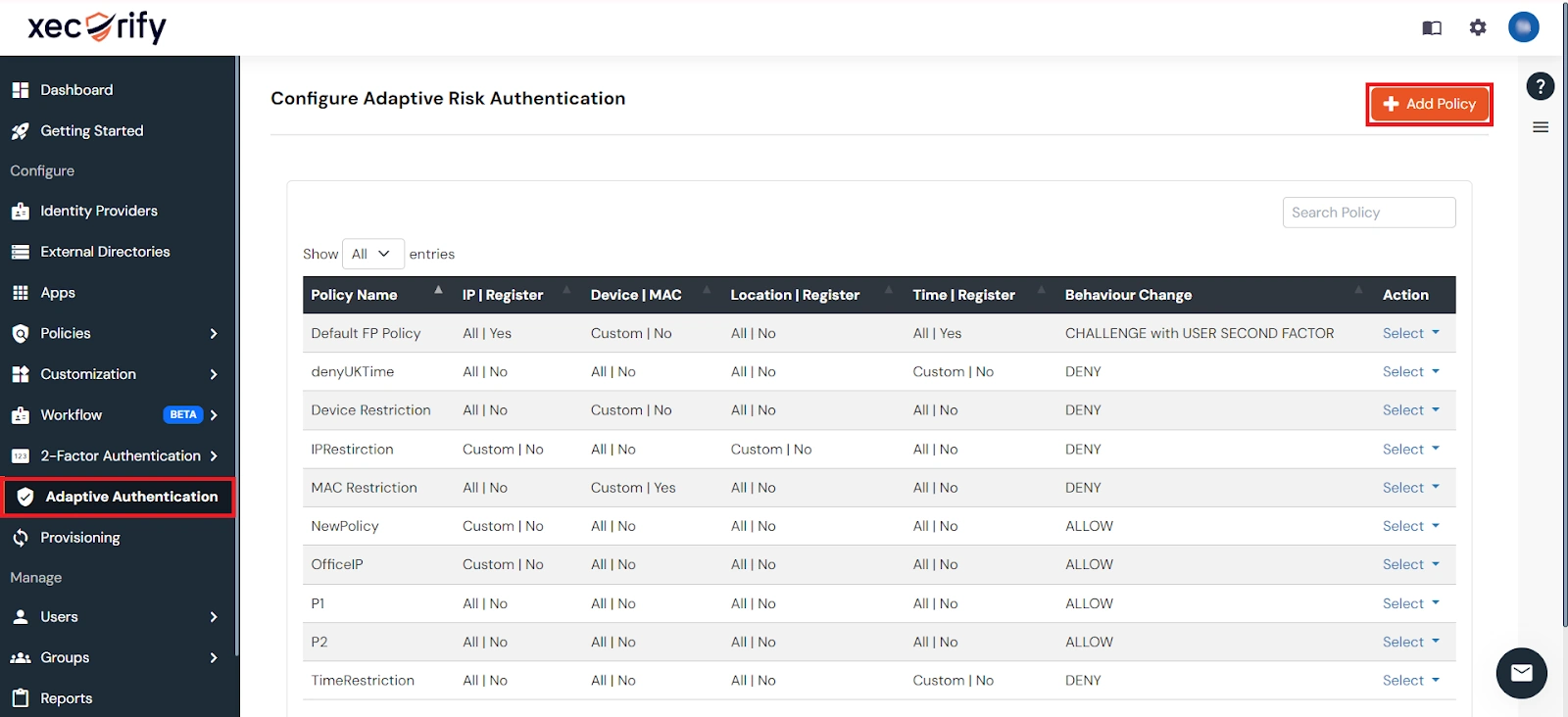
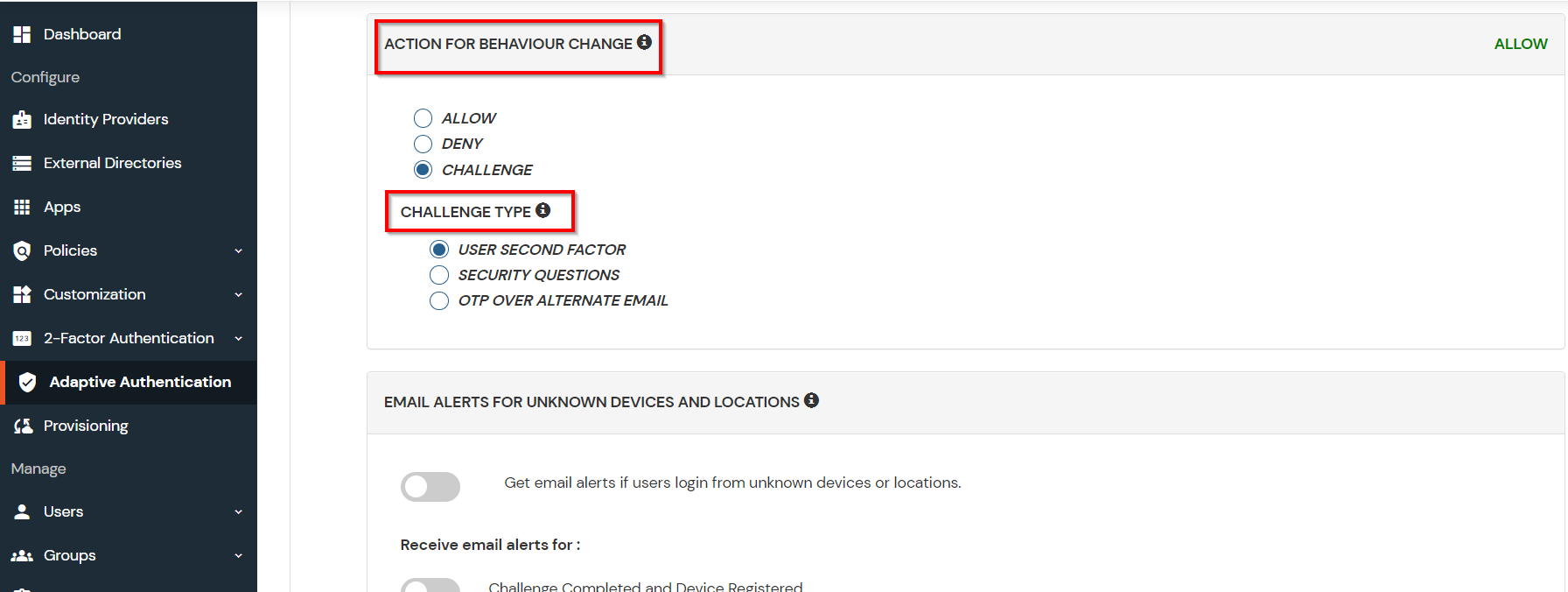
| Attribute | Description |
|---|---|
| Allow | Allow users to authenticate and use services if Adaptive authentication condition is true. |
| Deny | Deny user authentications and access to services if Adaptive authentication condition is true. |
| Challenge | Challenge users with one of the three methods mentioned below for verifying user authenticity. |
| Attribute | Description |
|---|---|
| User second Factor | The User needs to authenticate using the second factor he has opted or assigned for such as
|
| KBA (Knowledge-based authentication) | The System will ask the user for 2 of 3 questions he has configured in his Self-Service Console. Only after the right answer to both questions is the user allowed to proceed further. |
| OTP over Alternate Email | User will receive an OTP on the alternate email they have configured through the Self Service Console. Once the user provides the correct OTP, they are allowed to proceed further. |
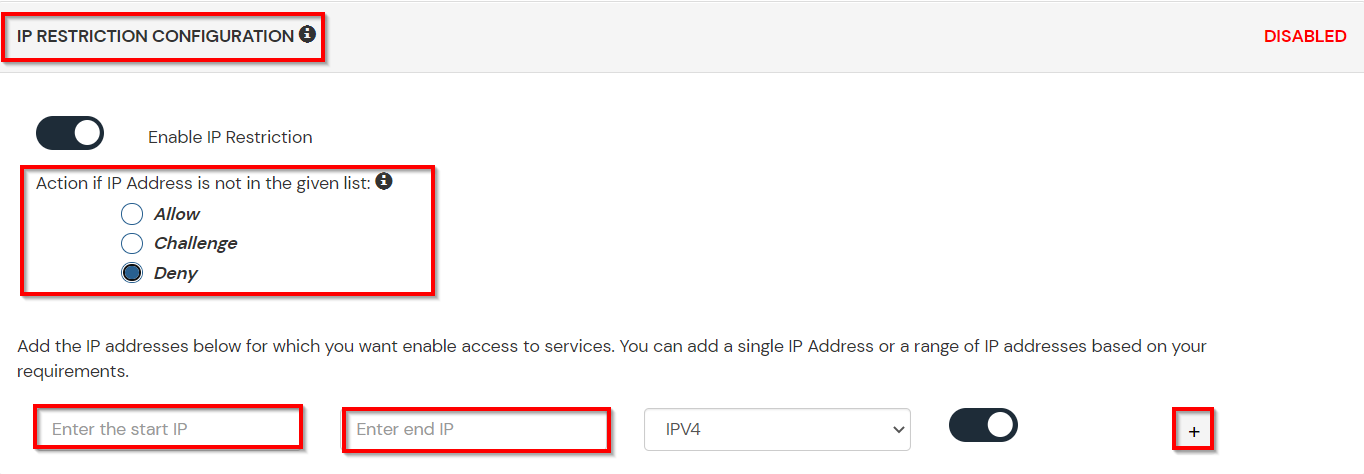
B. Adaptive Authentication with Limiting number of devices
Using Adaptive Authentication you can also restrict the number of devices the end user can access the Services on. You can allow end users to access services on a fixed no. of devices. The end users will be able to access services provided by us on this fixed no. of devices.
You can configure Adaptive Authentication with Device Restriction in following way
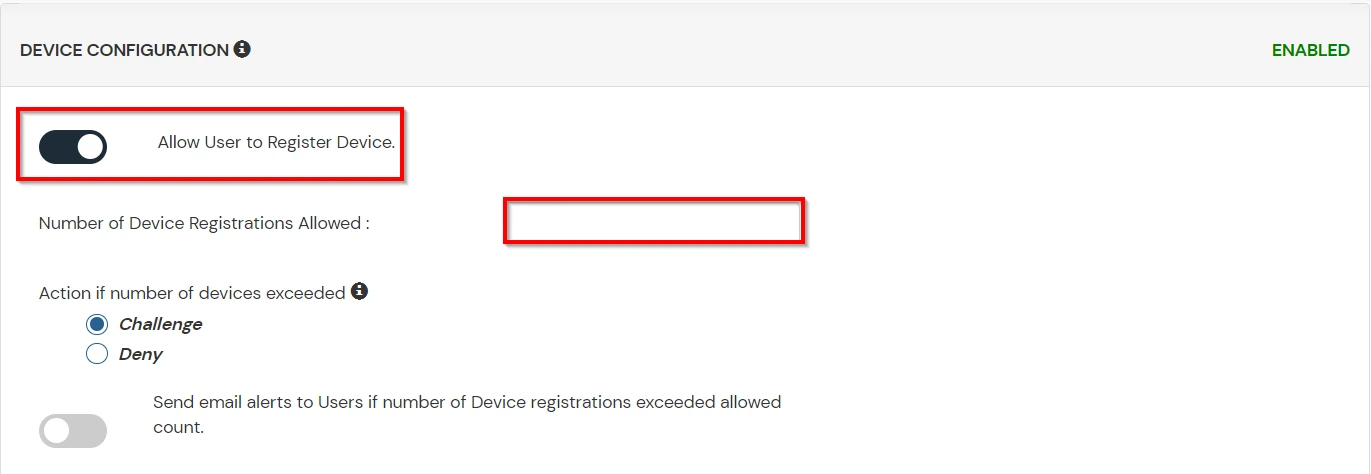
C. Add Adaptive Authentication policy to Salesforce

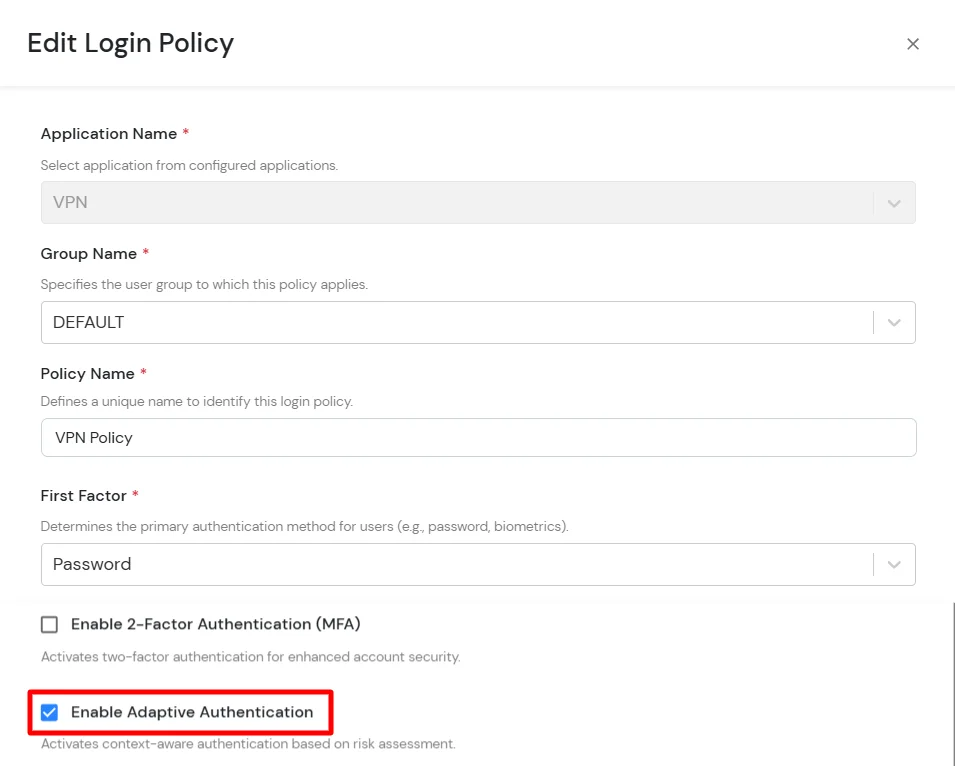
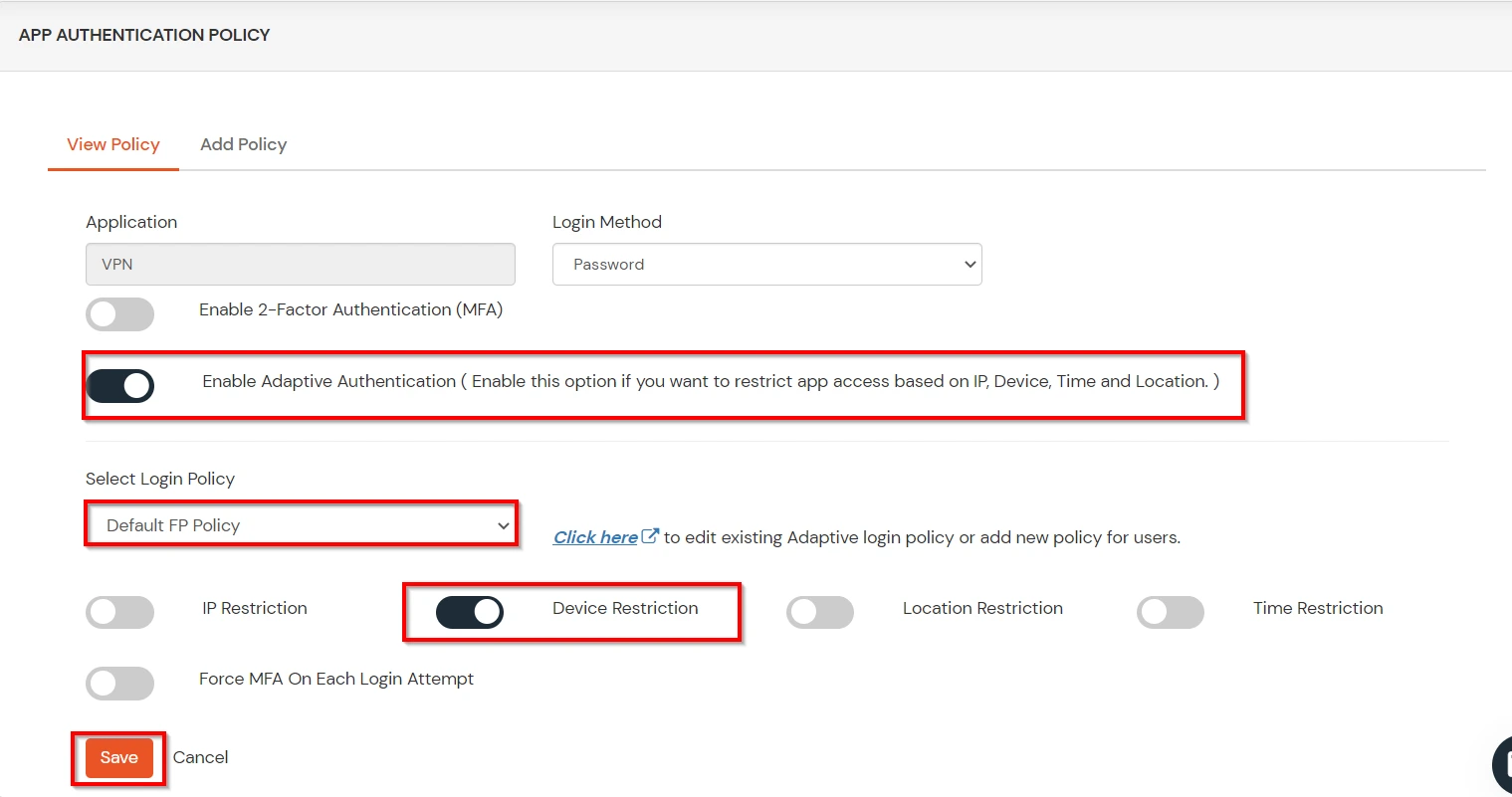
D. Notification and Alert Message.
This section handles the notifications and alerts related to Adaptive Authentication. It provides the following options :
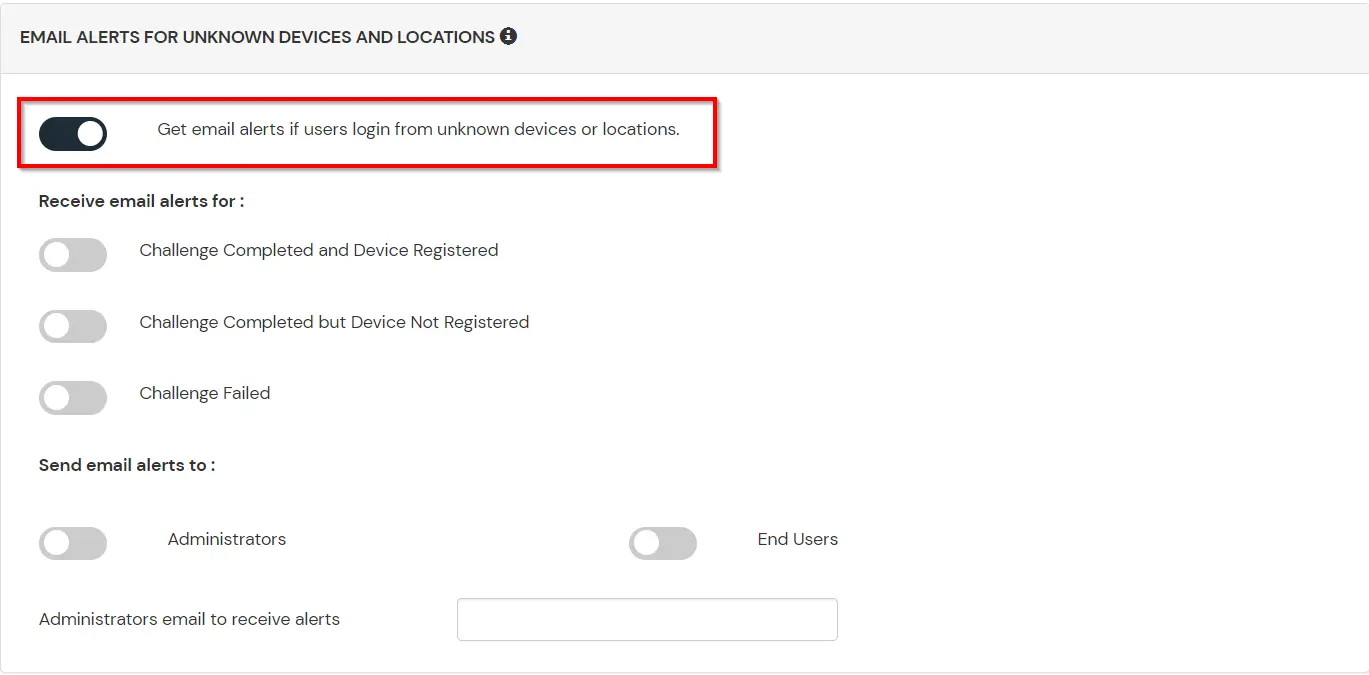
| Option | Description |
|---|---|
| Users login from unknown IP addresses, devices or locations | Enabling this option allows you to login from unknown IP addresses or devices and even locations. |
| Number of Device registrations exceeded allowed count | This option will allow you to register more devices than the devices you have numbered. |
| Challenge Completed and Device Registered | Enabling this option allows you to send an email alert when an end-user completes a challenge and registers a device. |
| Challenge Completed but Device Not Registered | Enabling this option allows you to send an email alert when an end-user completes a challenge but do not registers the device. |
| Challenge Failed | Enabling this option allows you to send an email alert when an end-user fails to complete the challenge. |
